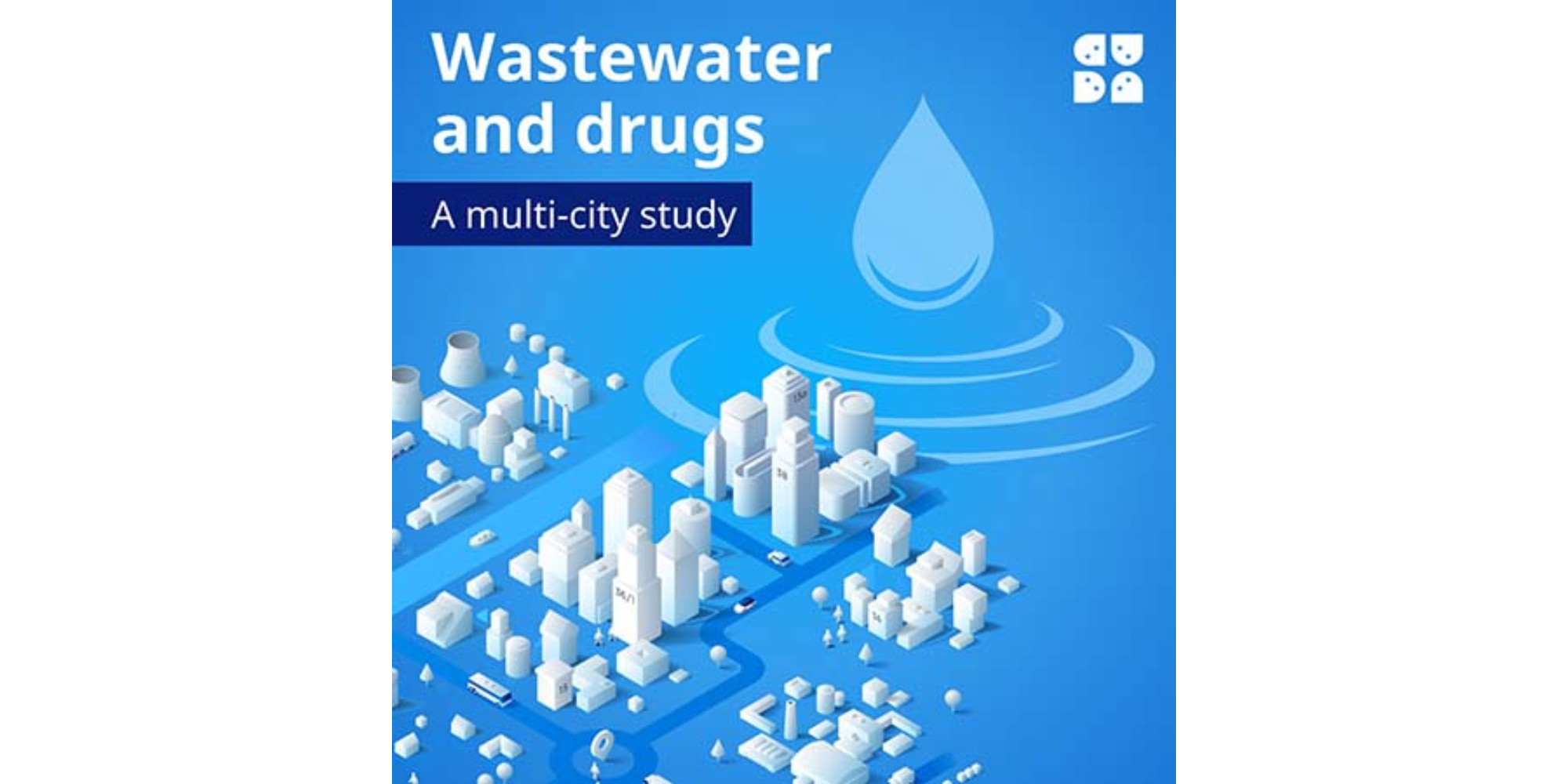Stimulant use is increasing – cannabis is decreasing
The latest findings from the largest European project in the science of urban wastewater analysis and epidemiology are published today in the report “Wastewater analysis and drugs – a European multi-city study,” published by the SCORE group project team in collaboration with the European Union Agency for Drugs (EUDA). The increase in MDMA, cocaine and amphetamine compared to 2023 is the focus of this year’s study (2024), while there is a decrease in cannabis.
The project analysed urban wastewater in 128 European cities from 26 countries (24 EU countries, Turkey and Norway) to investigate drug use by the inhabitants of these cities. The study analysed daily wastewater samples over a one-week period between March and May 2024. Wastewater from approximately 69.1 million people was analysed for concentrations of five stimulant drugs (amphetamine, cocaine, methamphetamine, MDMA/ecstasy and ketamine) and cannabis.
Increases in concentrations of three stimulants (MDMA, cocaine, amphetamine) were observed, and differential patterns for methamphetamine and ketamine. Although results varied significantly across study sites, remarkably, all six illicit drugs studied were detected in almost all participating cities.
The SCORE project team has been conducting an annual wastewater monitoring survey since 2011. As Dr Despo Fatta-Kassinou, Professor of the Department of Civil and Environmental Engineering and Director of the Gaia Environmental and Technical Processes and Water Systems Laboratory of the University of Cyprus, said that the Gaia laboratory has been participating in this network since 2012, with data on the use of amphetamines, MDMA (ecstasy) and cocaine (in Nicosia and Limassol), while in recent years, with the full financial support of the Cyprus Addiction Treatment Authority (CTA), the research has been extended to all urban areas of the country. The working team of the Gaia laboratory for this project consists of Dr Magda Psychoudaki (principal investigator), Ms Rafaella Panagiotou, and Dr Kostas Michael.
Main findings:
- MDMA: Of the 76 cities with data for 2023 and 2024, 42 reported an increase in MDMA detections, 24 a decrease (mostly in Central European and Baltic cities) and 10 a stable situation. The highest amounts of MDMA were detected in city wastewater in Belgium, the Czech Republic, the Netherlands and Portugal. In Cyprus, MDMA consumption levels are very low during this measurement period (April, 2024).
- Cocaine: levels of cocaine use remain highest in cities in western and southern Europe, but traces were also found in many eastern European cities, where increases were observed. The increase in cocaine detections is a trend observed since 2016. In Cyprus, during the same measurement period (April 2024), an increase was found in Larnaca (about 40%), while concentrations in other cities were at last year’s levels, and relatively low compared to the European average.
- Much lower levels were found in southern cities, although more recent data show some increases. Of the 69 cities with data on amphetamine residues for 2023 and 2024, 34 reported an increase, 15 a decrease and 20 a steady state. In our country, amphetamine consumption appeared to be low for another year compared to other European countries.
- Methamphetamine: Traditionally concentrated in cities in the Czech Republic and Slovakia, methamphetamine is now also present in cities in Belgium, Croatia, eastern Germany, Spain, the Netherlands and Turkey and several northern European countries. In Cyprus, the survey demonstrates that the increasing trend observed in methamphetamine use in the country in recent years did not continue in spring 2024, with most areas showing a slight decrease in methamphetamine use, while Nicosia and Larnaca showed a slight increase.
- Ketamine: 2024 data reported from 82 cities revealed relatively low levels of residual ketamine in urban wastewater. Of the 42 cities with 2023 and 2024 data on ketamine residues, 14 reported an increase, 16 a steady state and 12 a decrease. The highest amounts of ketamine were found in urban wastewater in Belgium, the Netherlands, Hungary and Norway, while very low levels were also found in Cyprus. The city of Limassol showed evidence of a very small increase.
- Cannabis: The highest amounts of the cannabis metabolite THC-COOH were found in urban wastewater in western and southern Europe, particularly in Croatia, Germany, Spain and the Netherlands. In 2024, decreasing trends were observed, with 25 cities out of 52 reporting a decrease and 14 cities reporting an increase compared to 2023. In Cyprus, although widespread, cannabis use is low compared to the European average. However, a very significant increase was seen in the free province of Famagusta, where very high concentrations were reported compared to 2023.
Source: University of Cyprus | Latest news (https://tinyurl.com/34a8u865)
